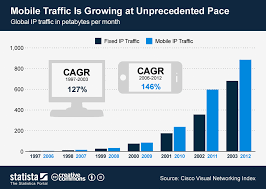3. Conduct In-Depth Keyword Research
Keyword research is the backbone of any successful SEO strategy. Without identifying the right keywords, even the best content can get buried in the search results. In 2025, keyword research has become more nuanced and essential than ever. It’s not just about targeting a handful of high-traffic keywords—it’s about understanding your audience’s search intent and focusing on long-tail and related keywords that can drive targeted, high-quality traffic to your site.
Why Keyword Research is Essential for SEO
Effective keyword research allows you to discover what people are actually searching for and tailor your content to answer their questions or solve their problems. By targeting keywords that have a high search volume and low competition, you can increase your chances of ranking higher on search engines and attracting more visitors.
Some key benefits of keyword research include:
- Improved rankings: By targeting relevant keywords, your content is more likely to rank for search queries that align with user intent.
- Increased traffic: By identifying keywords that your target audience is searching for, you can create content that attracts more qualified traffic.
- Better user engagement: When your content matches what users are searching for, it increases the likelihood of longer visit times and lower bounce rates.
How to Conduct In-Depth Keyword Research
To truly excel in SEO, your keyword research must go beyond simple search volume. Here’s how to conduct effective keyword research in 2025:
- Start with Seed Keywords
Seed keywords are short, broad phrases that give you a starting point for finding more specific and related keywords. For example, if you have a blog about digital marketing, your seed keywords might include “digital marketing,” “online marketing,” or “SEO strategies.” - Use Advanced Keyword Research Tools
There are several advanced tools available to help you find the best keywords for your content:
- Google Keyword Planner: This free tool helps you discover keyword ideas, search volume, and competition data.
- Ahrefs: Ahrefs is a comprehensive SEO tool that gives you data on keyword difficulty, search volume, and traffic potential.
- SEMrush: SEMrush offers valuable keyword suggestions, along with insights on trends, CPC (Cost-Per-Click), and competition.
- Ubersuggest: A free tool by Neil Patel that helps you find keyword ideas, long-tail variations, and competition analysis.
These tools can help you expand your seed keywords into a comprehensive list of search queries that will guide your content strategy.

- Focus on Search Intent
Understanding search intent—the reason behind a user’s query—is critical in keyword research. Search intent is divided into three main categories:
- Informational: Users are looking for answers to questions (e.g., “how to improve website traffic”).
- Navigational: Users want to go to a specific website (e.g., “Facebook login”).
- Transactional: Users are ready to make a purchase or take an action (e.g., “buy SEO tools”).
Focus on targeting keywords that align with the informational intent if you’re creating blog posts or educational content. If you’re running an e-commerce site, targeting transactional keywords will help you attract customers ready to make a purchase.
- Target Long-Tail Keywords
Long-tail keywords are longer, more specific phrases that have lower search volume but often higher conversion rates. These keywords are more specific to what users are looking for and usually have lower competition, making it easier to rank for them. For example, instead of targeting the broad keyword “SEO,” try targeting a long-tail keyword like “SEO strategies for small businesses.”
Using long-tail keywords allows you to capture more niche traffic while improving the chances of ranking for more specific queries.
- Analyze Keyword Difficulty and Competition
Not all keywords are created equal, and some will be much harder to rank for than others. Before deciding which keywords to target, use keyword research tools to assess the keyword difficulty (KD) or competition level. Highly competitive keywords often require more resources, time, and backlinks to rank for.
Instead of competing with big brands for high-traffic keywords, focus on less competitive, niche keywords that still have a decent search volume. These keywords can drive more targeted traffic without the intense competition.
- Check Out “People Also Ask” and Related Searches
Google’s “People Also Ask” (PAA) feature is a goldmine for finding additional keyword ideas. These questions represent what users frequently search for after their initial query, and targeting them allows you to create content that directly answers user queries.
Additionally, Google’s related searches at the bottom of the search results page can give you insight into similar search terms. These can help you expand your list of target keywords and identify subtopics to cover in your content.

- Consider Seasonal and Trend-Based Keywords
Some keywords may only be relevant at certain times of the year or when a trend is rising. For example, terms related to “Christmas sales” or “Black Friday deals” will only be searched during specific seasons. Identifying and capitalizing on these seasonal trends can drive significant traffic to your site during peak times.
Use tools like Google Trends to identify trends in your industry and create content around seasonal keywords.
Keyword Mapping and Content Creation
Once you have a comprehensive list of keywords, it’s time to map them to your content. For each piece of content, decide which primary keyword to target and which secondary keywords or related terms to include. Here’s how to approach it:
- Primary keyword: Choose one primary keyword per piece of content to target and ensure it’s included in the title, headers, and meta descriptions.
- Secondary keywords: Use related keywords and LSI (Latent Semantic Indexing) keywords throughout the content to enhance relevancy and improve SEO.
- Content pillar strategy: For larger topics, consider creating a pillar page that covers the main keyword in-depth, and create cluster content around related long-tail keywords.
Conclusion
In-depth keyword research is a critical part of any successful SEO strategy. By identifying the right keywords—focusing on search intent, targeting long-tail keywords, and analyzing competition—you can create content that drives high-quality, targeted traffic to your website. In 2025, the key to keyword research isn’t just about the search volume; it’s about matching your content to what users are searching for, ensuring your site answers their questions, and providing valuable information.
Related Tags:
- Keyword Research for SEO
- SEO Keyword Strategies
- Long-Tail Keywords
- Search Intent Optimization
- Keyword Difficulty Analysis
- SEO Content Strategy
- Target Keywords
- Keyword Mapping for SEO
- Traffic Growth with SEO
- SEO Tools for Keyword Research













